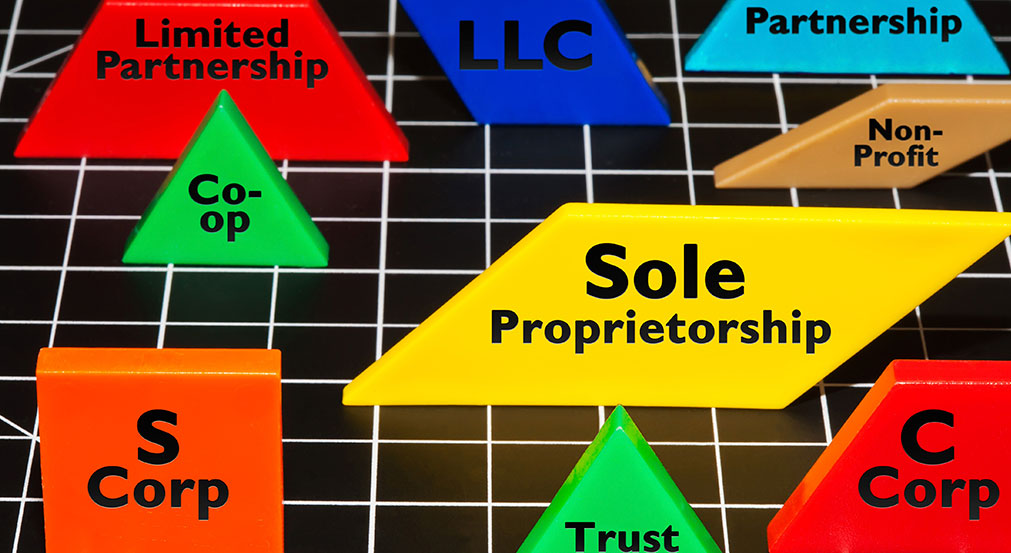Unlocking Key Differences in Ownership, Benefits & Tax Implications
Owning a business offers many benefits. The business structure type defines how some benefits work, such as limiting liability, differing tax structures, various levels of control, and governmental regulation. The main benefit of owning a company is to separate liability between the company and the individual owner. That is to say that the business’s liability stays with the business and will not touch the owner’s assets, such as their house, personal accounts, or other assets.
When forming a company, the particular objectives of the business need to be understood. Many types of business entities exist, including partnerships, corporations, and limited liability companies (LLCs). Choosing the correct entity can be critical. Make the wrong choice; the consequences can range from annoying to dire.
If there is one owner, the principal choices are sole proprietorship (technically not a type of business entity), corporation, or LLC.
If there is more than one owner, the principal choices are partnership (either a general or limited partnership), corporation, or LLC.
Each type of business entity has differing advantages and disadvantages regarding limits on liability, control of the company, tax consequences, and regulations that may benefit one business but not necessarily another. For an entity that is not a limited liability entity, the owner (or owners) is fully liable for the obligations of the business, even if the owner has not committed to contribute to it in the future. The owners of sole proprietorships and partnerships do not enjoy limited liability for the obligations of the business, which means that the owners pay business liabilities.
One of the most hotly debated issues for business owners is control. Control can be more easily and flexibly allocated in a non-corporate form, such as a partnership or LLC. Whereas corporations have more strict procedural requirements. Nonetheless, knowledgeable counsel can achieve much of the desired flexibility in corporate form. However, the legal fees are typically higher since the corporate form is less flexible and requires more legal work to achieve the desired flexibility.
One of the most significant tax aspects is whether the business is a “flow-through” entity, whereby income of the business flows through to the owners of the business for tax purposes, and each owner pays income tax on their share of the business’s income.
Here is a quick list for comparison:
| Entity | Liability | Taxes | Control |
|---|---|---|---|
| Sole Proprietor | Owner 100% | Owner 100% | Owner 100% |
| Partnership | Owners’ 100% | Owners’ 100% | Owners’ 100% |
| LLC | LLC 100% | Pass-Through to Owner | Owners’ 100% |
| Corporation | Corporation 100% | Corporation 100% Shareholders on dividends |
Shareholder vote |
A limited liability company is the nimblest and most owner-friendly business structure. The LLC maintains the liability of the company separate from the owners. Income, debt, and taxes pass through to the owners in proportion to their ownership percentage. The owners report LLC income as a schedule on their personal tax returns. Further, the LLC gives its owners wide latitude to control the management and the form of the business as they choose. There are no required annual meetings, no required board members, and no required distributions or contributions. Many closely held companies prefer the flexibility and control that an LLC offers.
Alternatively, corporations have many requirements: annual meetings, board members, quorums for votes, etc. The corporation’s liability is separate from the individual owners (shareholders). Corporate income and debt remain the sole responsibility of the corporation. The owners (shareholders) may receive dividends of wages which are the only income the shareholders must report on their tax returns. The corporation files its own tax return, which has its own cost. Notably, until recently, only corporations could attain non-profit status. Regulations have recently changed to allow certain LLCs to apply for non-profit status.
However, more is needed to merely create a business to effectively separate liability. The business must actively keep the assets and liabilities of the business separate from the individual owner’s assets and liabilities. The business should not be used as a “piggy bank” for the owner. Simple ways to maintain this separation include separate bank accounts for the business and the owners and separate ownership of assets (vehicles, real estate, and office equipment are not bought by the company and are used for personal tasks).
Bluntly stated, if the business comingles assets with the owner, a court will comingle the liability amongst the business and the individual, and thus, hold the individual liable for the actions of the business.





